You may have heard that Suzuki is a bit behind schedule in releasing its next generation GSX-R1000. The “concept” unveiled by Suzuki earlier today is almost certainly the 2017 production model with only minor changes left in the design. Suzuki essentially concedes as much.
As you might expect, Suzuki claims the new model is lighter, more powerful and handles better … in part due to the inclusion of many of the electronic aides found in its competitors’ production bikes.
Here are photos of the “concept” along with several of the details of the new design provided by Suzuki:
BREA, Calif. (Nov. 17, 2015) – It has been three decades, with more than a million editions sold, since the GSX-R line was born. And a decade and a half has elapsed since the first GSX-R1000 changed the open sportbike class forever.
Now, the concept of the 6th-generation GSX-R1000 is redefining what it means to be The Top Performer. It embodies the life work and professional ambition of Suzuki engineers who are passionate about the GSX-R1000 and its place in motorcycle history. Men who love riding and racing, enthusiasts determined to restore the GSX-R1000 to its proper title of The King of Sportbikes.
Know this: It is the most powerful, hardest-accelerating, cleanest-running GSX-R ever built.
It is also the lightest, the most compact, the most aerodynamic and the best-handling GSX-R1000 ever, with smoother throttle response and better combustion efficiency. It’s fitted with a supremely effective electronic engine management system that doesn’t require a degree in engineering to understand–and doesn’t need constant adjustment by a squad of computer technicians to work.
Above all, it is a GSX-R. By definition, it is built to run right and be reliable, and designed to help make each person fortunate enough to pilot the bike a better rider. By plan, it is engineered using experience gained during 30 Years of Domination in production-based Superbike, Superstock and Endurance races worldwide, combined with new proprietary technology developed in the MotoGP World Championship.
The heart of a race bike beats in every GSX-R1000, delivering an invitation: Own the Racetrack.
GSX-R1000 Concept Goals
The primary goal is to regain the King of the Sportbikes crown.
This simple, yet direct objective embodies the personal and professional ambition of Suzuki engineers, who are determined to restore the GSX-R1000 to its proper title of The King of Sportbikes. The 2017 GSX-R1000 Concept is the most powerful, hardest-accelerating, cleanest-running GSX-R ever built.
Engine design goals:
- Create the most powerful GSX-R engine ever built.
- Increase top-end performance without sacrificing low-end and mid-range power.
- Optimize engine dimensions to enhance cornering performance.
- Increased performance and drivability using MotoGP derived technology.
- Maintain Suzuki’s endurance-race-proven durability and reliability.
Chassis design goals:
- Craft the lightest GSX-R1000 ever built.
- Make it the most compact GSX-R1000 chassis ever produced.
- Optimize the geometry to increase rider confidence, follow Run. Turn. Stop. ideals
- Concentrate on rider-oriented handling.
- Shape the most aerodynamic GSX-R1000 in history.
Electronics design goals:
- Increase rider confidence using Run. Turn. Stop. ideals
- Intelligently using technology to increase rider usability, convenience and enjoyment
Styling design goals:
- Retain GSX-R styling identity.
- Refine shapes for aerodynamic performance.
- Connect with MotoGP-derived shapes and colors.
- Fashion sleek bodywork to enhance the lightweight chassis.
Key Features
Engine
- All new 999cc liquid-cooled DOHC inline-four
- Entirely new engine developed to increase peak power without losing low-to-mid range output using the Broad Power System concept, derived from MotoGP technology.
- The new engine’s external dimensions are compact, helping the overall motorcycle be equally compact to provide outstanding corning performance.
- Suzuki Racing VVT (Variable Valve Timing System)
- Steel balls are positioned in grooves in the intake cam sprocket and adjacent guide plate. When moved outward by centrifugal force, they stack in different grooves during low and high RPM. During high RPM operation the system rotates the intake cam, retarding intake cam timing which elevates peak power. During low RPM operation, the camshaft returns to the prior position. VVTS optimizes intake valve timing is for both high-RPM, and low and mid-RPM ranges. So extra top-end power is available, without dropping low-to-mid range output.
- Suzuki Racing Finger Follower Valve Train
- The new GSX-R1000 Concept’s valve train system is transformed from previous models’ bucket-tappet system to a finger follower rocker arm type to improve valve control and allow higher RPM. The reduced moving mass also allows increased valve lift and higher peak RPM, increasing peak output. Valve response and control is also enhanced throughout the rev range.
- Suzuki Top Feed Injector (S-TFI)
- Secondary injectors located in the top of the air box operate at higher RPM to deliver finely atomized fuel through the throttle bodies and into the combustion chamber. The dual-injector design produces greater top end power without detracting from low-mid RPM range output.
- Suzuki Exhaust Tuning-Alpha (SET-A)
- Suzuki engineers added two servo-operated SET-A butterfly valves, one in each header balance tube. The SET-A valve in each header balance tube remains closed to enhance lower-RPM and mid-range power, then opens to add significant power at higher RPMs.
Chassis
- All new aluminum frame
- Twin spar-type continues Suzuki tradition of aluminum frames fitted to GSX-R models to help create the lightest GSX-R1000 ever.
- The shape was carefully designed to not only optimize geometry for superb handling, but to accommodate high-volume intake ducts and support an array of leading-edge suspension components.
- SHOWA BFF (Balance Free Fork) front suspension
- Directly developed through racing, the SHOWA BFF® forks use external damping circuits to equalize (or balance) oil pressure above and below the solid internal piston as it moves. Using external circuits instead of valve stacks positioned on the piston itself allows smoother, more precise, and more consistent piston movement and damping control, without the influence of unequal pressure or oil cavitation. External nitrogen-charged oil reservoirs are also used to further stabilize suspension action.
- SHOWA BFRC Lite (Balance Free Rear Cushion) rear suspension
- The latest iteration of SHOWA’s BFRC Lite suspension is significantly lighter than prior versions. This not only aids in reducing the motorcycle’s overall mass, but benefits the suspension action as well. As the BFRC shock piston moves, oil is pushed through external damping circuits, through a valve stack and back into the shock, on the other side of the solid piston. The system balances pressure on both sides of the piston, allowing smoother, more consistent piston movement and damping. The difference can be felt on the racetrack, with riders reporting better feel, more cornering grip and improved drive grip.
- New aerodynamic bodywork
- The new GSX-R1000 Concept is fitted with MotoGP-inspired bodywork that is more aerodynamic which is designed to contribute to better overall racetrack performance by increasing handling and top speed on the racetrack.
- The new bodywork is more compact, sleeker and narrower, to increase aerodynamic efficiency.
- Lift at speed has been reduced and CdA has been improved compared to a 2016 GSX-R1000’s bodywork, thanks to a smaller frontal projected area.
- Even the fairing mounting bolts have been redesigned, with a new flat-top shape to reduce air resistance. Other mounting hardware is recessed to prevent turbulence.
- The fuel tank has a lower top and a sleeker shape, helping the rider tuck in more completely and easily. This improved rider tuck contributes to improved aerodynamic performance of the motorcycle.
- The new GSX-R1000 Concept is fitted with MotoGP-inspired bodywork that is more aerodynamic which is designed to contribute to better overall racetrack performance by increasing handling and top speed on the racetrack.
Electronics
- Ride-by-wire electronic throttle bodies
- The rider’s throttle hand movement is accurately measured and conveyed electronically to a servo mechanism that precisely moves the throttle body plates.
- The system augments the rider’s intentions so maximum intake velocity and the proper throttle opening is achieved for optimal engine response.
- Ten level Traction Control System (TC)
- The new GSX-R1000 Concept features Suzuki’s advanced traction control system, allowing the rider to not only select three different power modes using the S-SMS, but 10 different levels of traction control, depending upon road or racetrack grip conditions as well as personal preference and experience level. The S-DMS power modes and level of TC intervention can be changed while riding. After a change, the rider simply needs to close the throttle and the new settings will take effect.
- S-DMS (Suzuki Drive Model Selector) system
- The S-DMS permits easy selection of one of three engine power delivery settings to suit the rider’s personal preferences in various riding conditions, such as different racetracks or tight, twisty roads. The rider can select the power modes by using a switch on the left handlebar. Three different fuel maps are pre-set in the ECM, delivering three different engine characteristics. Together, with the 10-level traction control, S-DMS offers riders a variety of choices so they can select how they want the motorcycle to perform.
- Electronically controlled ABS
- Compact system samples data from the same sensors as the traction control system to ensure that the braking force is appropriate for the amount of road grip available.
- Quick shift system
- The GSX-R1000 Concept also has a new racing-type quick shift system. The quick shift system allows the rider to upshift and downshift, without using the clutch. The system automatically interrupts power just long enough—between 50 and 75 milliseconds, depending upon the sensitivity adjustment – to unload the transmission gear dogs and allow a clean upshift at full throttle, producing practically uninterrupted acceleration. For quicker and smoother downshifts without blipping the throttle grip or using the clutch, the system automatically opens the throttle valves just enough to increase RPM and match engine speed to the lower gear ratio.
- Launch control system
- The launch control system makes it easier for a racer to get a good start in closed-course competition by automatically limiting engine RPM and optimizing torque delivery while the rider holds the throttle twist grip wide open and concentrates on feeding in power via the clutch lever.
Electrical
- Full LCD instrumentation
- Like an “all glass cockpit” from an advanced aircraft, the GSX-R1000’s multifunction instrumentation set has no analog or mechanical mechanism. This results in a lightweight component that engineers and test riders have refined into an information conduit between the machine and the rider.
- Conventional information, like road and engine speed, temperatures and gear potion are displayed along with data related to the advanced electronic systems. But, best of all, the interface has been designed to grown intuitively as the rider uses the motorcycle and its systems. Find the system, adjust its setting, and ride.
- LED headlight
- The GSX-R1000 Concept is graced with Suzuki first ever LED headlight. The high-illumination LED headlight is compact, lightweight and is shaped to complement the nose shape of the fairing.
- LED position lights
- The GSX-R1000 Concept features sharp looking LED position lights arched above the front fairing’s intake vents. The subtle LEDs add a touch of sophistication while enhancing the motorcycle’s visibility to oncoming traffic.
- LED turn signals
- Sharp looking LED turn signals are lightweight, stylish and bright (the appearance and specification of the turn signals vary by market).
- LED tail light
- The LED tail/stop and license plate lights are a fresh design. The compact, vertical layout of the combined tail/stop light helps keep the tail section very slim, while the LED illumination draws minimal power.
Broad Power System – MotoGP technology
The GSX-R line has always been known for making broad power across the full RPM range, combining low-end and mid-range torque with an exciting top-end rush. The new GSX-R1000 Concept’s engine is designed to produce the utmost top-end power without sacrificing low-end and mid-range power, and torque.
To achieve the engine design target of “Increasing top-end power without losing low-to-mid range output”, MotoGP derived technologies are combined into the new GSX-R power plant, resulting in the “Broad Power System”.
The combination of Suzuki Racing VVT (SR-VVT), Suzuki Racing Finger follower valve train, Suzuki Exhaust Tuning-Alpha (SET-A) and Suzuki Top Feed Injector (S-TFI) systems form the Broad Power System designed to increase high-rpm performance and top speed without detracting from lower-rpm and mid-range performance. The result is strong, linear power and enhanced acceleration throughout the RPM range.
Make sure to check back at www.suzukicycles.com for the latest information regarding the next generation GSX-R1000 Concept and the rest of Suzuki’s products.
See more of MD’s great photography:
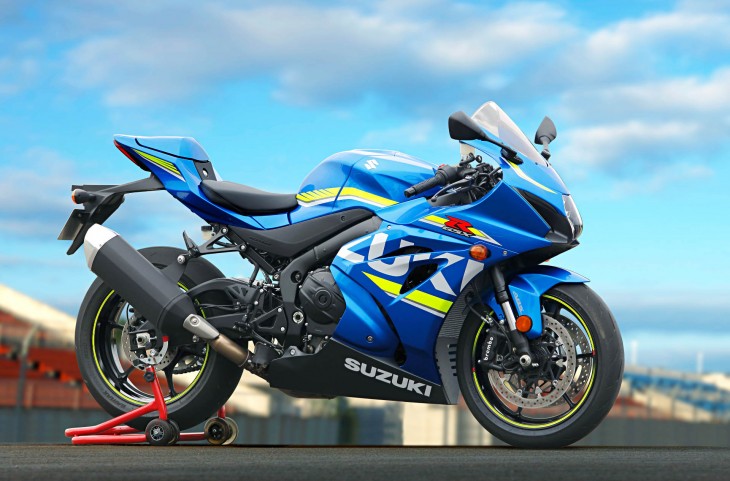
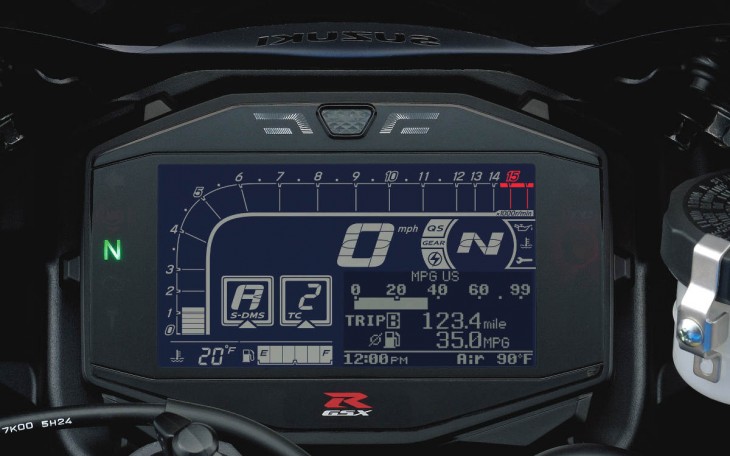
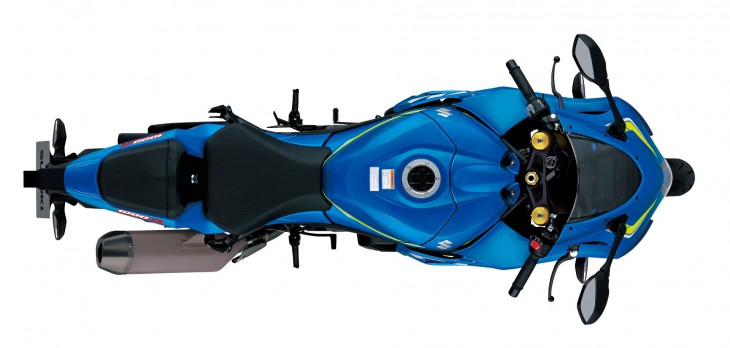
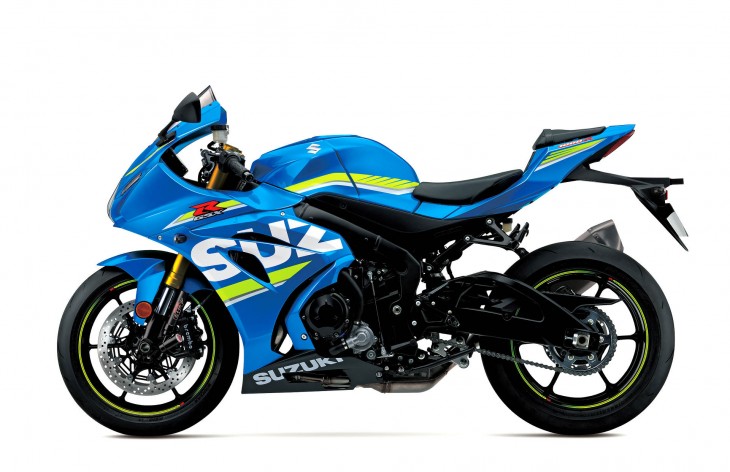
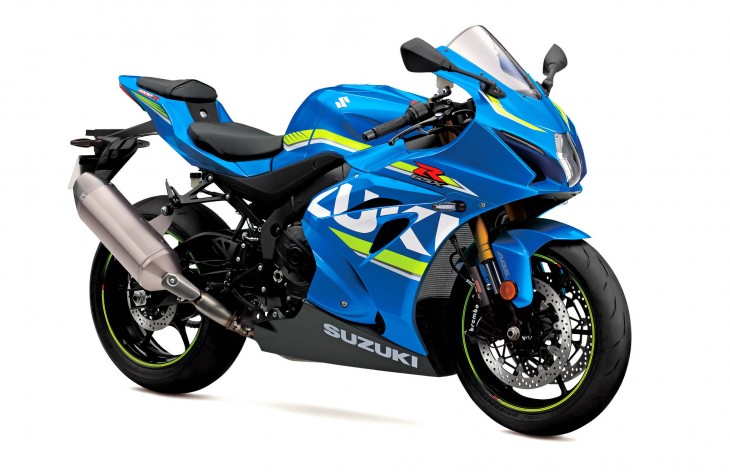
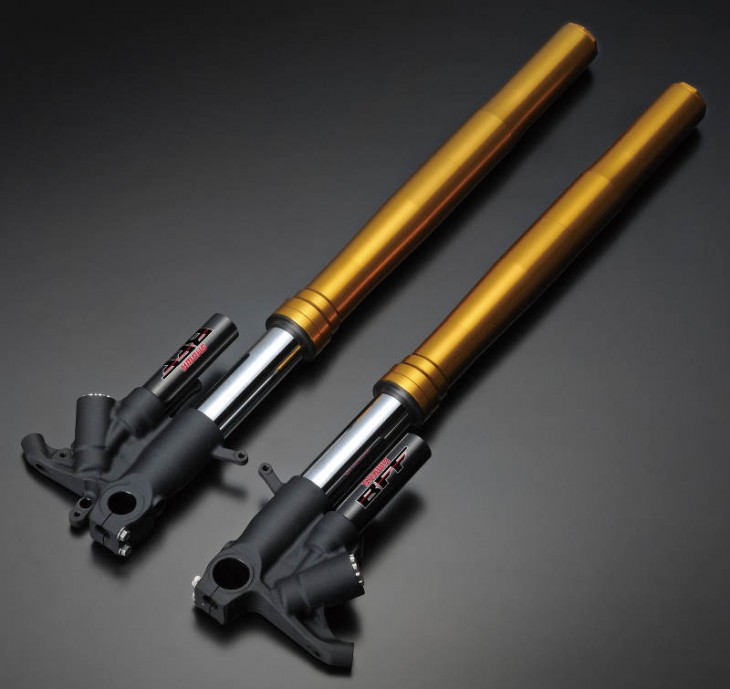







Anyone think that swingarm looks skinny? It looks less meaty than the one on my k6 600. Maybe its just the size of that exhaust can! Holy Howitzer Batman!
Though I am not a big fan of the color scheme/graphics combo of this bike it still looks good. I’d like to see it in another color, but either way the bike looks great and it is nice to see a manufacturer make a sleek sport bike that doesn’t look like it was built using Jr.’s lego set.
Well done Suzuki!
The bike looks nice. Would like to see what it in another color as well.
After the GSX-S I thought for sure the new GSX-R would be horrifically styled. Surprise! It actually looks very good. Back to looking like a motorcycle not some alien transformer. It probably won’t beat an R1 but after a certain level of insane performance who really cares. It will be a rocket either way.
re: “not some alien transformer.”
shhhh hold that down, the Overlords are listening. you’re going to get us smited.
Bill C: The R1 doesn’t have a flat-plane crank. It is a cross-plane. Has been that way since 2009.
Yeah. That’s what I meant!
Can’t say that I share the impressed feeling. What is with the non-integrated taillights and front indicators? That is a big step backward in terms of modern feel. The nose is also a bit of a throwback being much more soft looking. All in all the entire bodywork shape to include the tail, which looks like something circ late 90s, is very bland. Tech does not bring it up to par with yamaha or kawa for that matter. As a previous K7 owner, I believe K7 looks more modern than this.
Sam I think that’s the point. From reading the comments on all the bikes produced, at least with this group, they are growing tired of the modern and edgy (insect or transformer look if you will) and yearn for more rounded more sedate styling. That’s why this and the SV 650 and the Bennelli scrambler are receiving fewer harsh criticisms than usual.
Ok, I suppose I could adjust to that perspective a bit, but what is everyone’s opinion on the turn signals though? I considered their integration to be a step forward. Nothing to bump and break off either, and no unsightly holes in the fairing if they are removed…
I consider the turn signals to be an oversight, myself. Also, it seems like the one in the action shot has signals from the early ’90s while the shot up top has a blinkers with a little more modern shape to them.
Overall, I think the bike looks good. The R1 is still my personal favorite design in this category, though.
“LED turn signals
Sharp looking LED turn signals are lightweight, stylish and bright (the appearance and specification of the turn signals vary by market).”
Yes, integrated t/s would be nice I suppose. Not a deal breaker. I would think guys that buy this bike would ditch the t/s for some mini’s, put a fender eliminator to clean up the back end and a pipe on it before they even get it home anyway. Was just looking at pics of their MotoGP bikes for 2016 and this bike resembles the lines of those bike a lot imo.
Yes, the MotoGP-ish look is what appeals to me. Same for the R1.
Nice lines, especially that accent stripe coming forward from the seat. I’m glad the designers excised the gills on the ram air inlets. Adding some lines to square off the muffler and give it some interesting “dimensionality” was a nice touch. Nice, smooth, uncluttered design for a change. Good job. It’s hard to beat a Gixxer.
re: “Suzuki Racing VVT (Variable Valve Timing System) ◦Steel balls are positioned in grooves in the intake cam sprocket and adjacent guide plate. When moved outward by centrifugal force, they stack in different grooves during low and high RPM. During high RPM operation the system rotates the intake cam, retarding intake cam timing which elevates peak power. During low RPM operation, the camshaft returns to the prior position.”
sounds simple and effective. “colorway” me impressed. now where’s my Ti intake and exhaust valves…? talk to me Zook.
Meh. I know my name gives my allegiance away, but I’ll still take the new ZX-10R or R1 any day of the week. I expected more from Suzuki, especially considering the ridiculous bikes Yamaha and Kawasaki have ALREADY shown (R1) or are coming (ZX10). I figured Suzuki would take it a step further, especially with styling and some big advance in engine tech or whatever. It looks like they settled for being an also-ran.
Looks a bit Katana to me. That is not a good thing.
And so we finally reached the point where the passenger seat is the highest point of the bike…. It looks good. Reminds me of a bigger, badder version of my favorite looking sport bike of all, the Daytona. Lean and mean, all business, no concessions whatsoever.
The sheer amount of pure race tech makes me wonder if this will hold up as the kind of “citizen’s race bike” the GSXR has always been. “Steel balls skipping from groove to groove” VVT sounds almost more like it belongs on Honda’s unobtanium GP refugee, than an “everyman’s” Gixxer. But hopefully I’m wrong.
Bikes like this makes me wish I actually enjoyed riding liters:( Some day, everyone who does, will already have bought one of these wonders, and the marketers will realize they need to shift demand towards middleweights again
They have really tidied up the styling on this thing! Gixxers had been getting more and more fussy and awkward, but this is really clean and harmonious.
It probably stops, goes and turns okay too
I love the styling of this bike, It is fresh and modern, but they have somewhat of a K5/6 design theme going on.
I was never a fan of the K9 styling especially the tank. They have brought back the wedge shaped tank that goes all the way back to the 82 Hans Muth designed GS1100S Katana. This is the most exciting thing I have seen this year.
I am so looking forward to Suzuki getting back on their feet in this segment. It has been too long.
As a primo Suzuki fan I am proud to say welcome baaak!
I’ll second that
‘Broad Power System’ from MotoGP?
From trackside, it is hard to tell the MotoGP Suzuki GSXRR apart from the MotoGP Yamaha M1 when it comes to exhaust note.
Is this a flat-plane crannk like the R1 has?
What? They sound nothing alike. IMO the M1 has the most recognizable exhaust note of all the GP bikes. The GSXRR sounds like a slower revving version of their former vee; ratty and on the edge of grenading. This coming from a zook fan.
I hope this doesn’t double post but my first reply seems to have vanished. The R1 hasn’t been a flat-plane since 2008. All R1’s since 2009 have been cross-plane.
Yeah, sorry, I meant cross-plane.
Standing olong the back straight at the Indy MotoGP race this year, I really detecting a similarity in exhaust sound between the Yamaha and the Suzuki, and thought that Suzuki must have copied the Yamaha engine lay-out, and with good reason.
The Suzuki MotoGP engine definitely does not sound like a conventional inline four.
I think Yamaha actually has a patent on the cross-plane I-4, so the Suzuki GP bike probably isn’t cross-plane, at least not to the point that Yamaha’s patent prohibits. But you are right: something is definitely unconventional.
re: “I think Yamaha actually has a patent on the cross-plane I-4, so the Suzuki GP bike probably isn’t cross-plane, at least not to the point that Yamaha’s patent prohibits”
no worries, if Yam does have a Patent (don’t know if they do or don’t) making and “racing” a Crossplane would not constitute “infringement”.
now making and SELLING a Crossplane on the open market to consumers for purposes of financial gain would certainly open them up to litigation. and even then, a Patent is only as strong as the Patent holders willingness/ability to enforce it.
“no worries, if Yam does have a Patent (don’t know if they do or don’t) making and “racing” a Crossplane would not constitute “infringement”.”
That is true, and being a GP bike, there isn’t much chance that Suzuki would be thinking of rolling the configuration down to a production bike. Or Yamaha’s patent will have long expired by the time they did.
That said, having heard the bike in person, if it is cross-plane, then something is definitely different that the Yam. Firing order maybe? I’m not sure. If it is a traditional crank, then something is still definitely different.
I read that they had a parent too, but I can’t figure out what exactly it entails since the concept has been used on 3 cylinder motorcycle engines (120* journals), and more similarly on V8 auto engines (90* journal spacing) for decades.
I am amazed at the things that can be patented these days.
re: “The Suzuki MotoGP engine definitely does not sound like a conventional inline four.”
the initial reborn Zook was definitely a Crossplane, however (comma) having stood along that same straight at Indy (with me Mum no less) it didn’t sound as “crossplany” as it once did.
Mum dares suggests they may have reverted back to yes, a conventional I4…? dunno, but Suzi had a much more “shrill” sound to it, enough to suggest a different firing order. ironically, the earlier narrow angle GSVR V4’s also had these overtones. even more ironic, for all it’s “underperformance”, the old kit was one of the best sounding in all of MotoGP.
It is impressive on paper, anyway. It will be interesting to see what kind of power and riding experience rises from these talking points.
Way to go Suzuki!! This rocket looks great….I have had 5 GSXR’s and now I will have a 6th!! Please tell us it has the 5 axis traction control/braking system!!! I was going to buy the new ZX-10…..but I will def wait!! GOOD JOB!!!